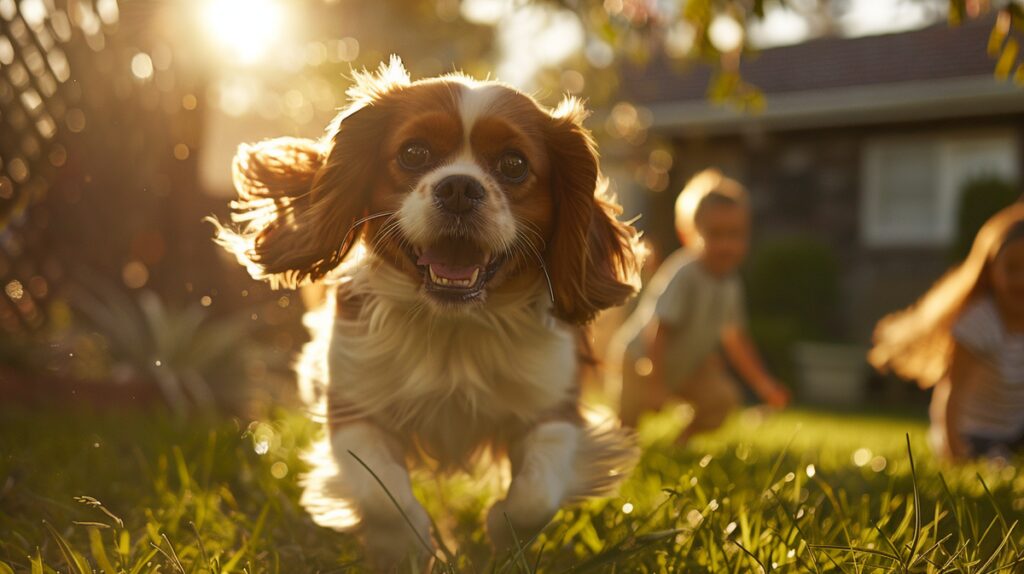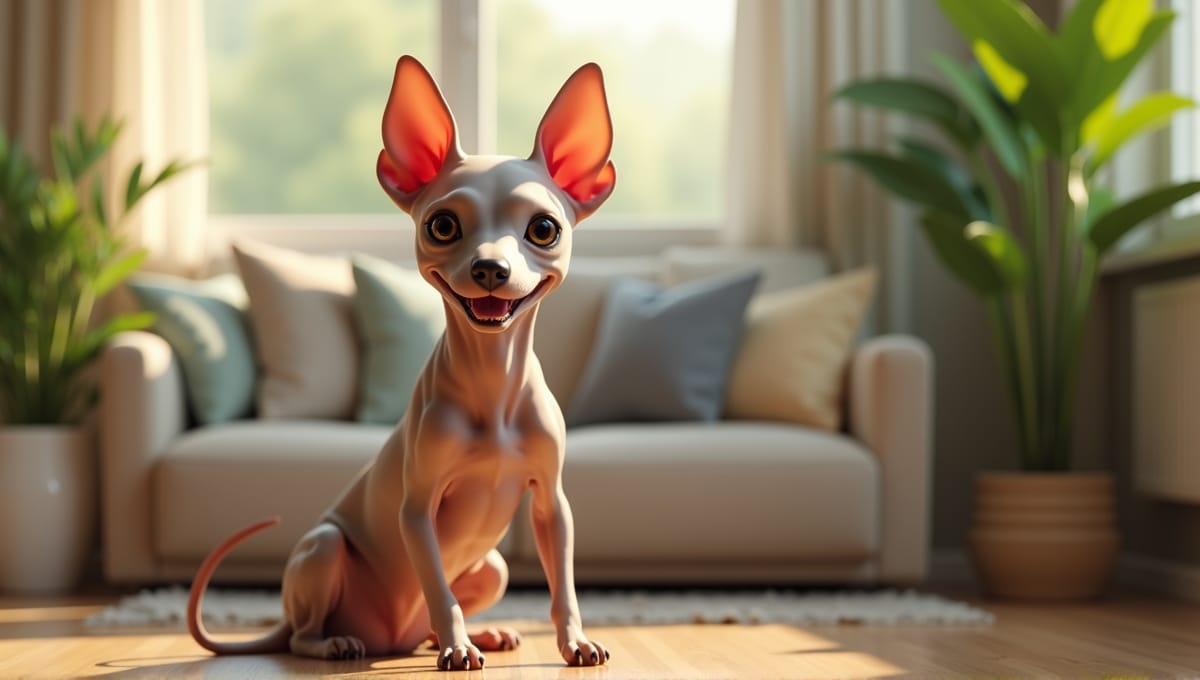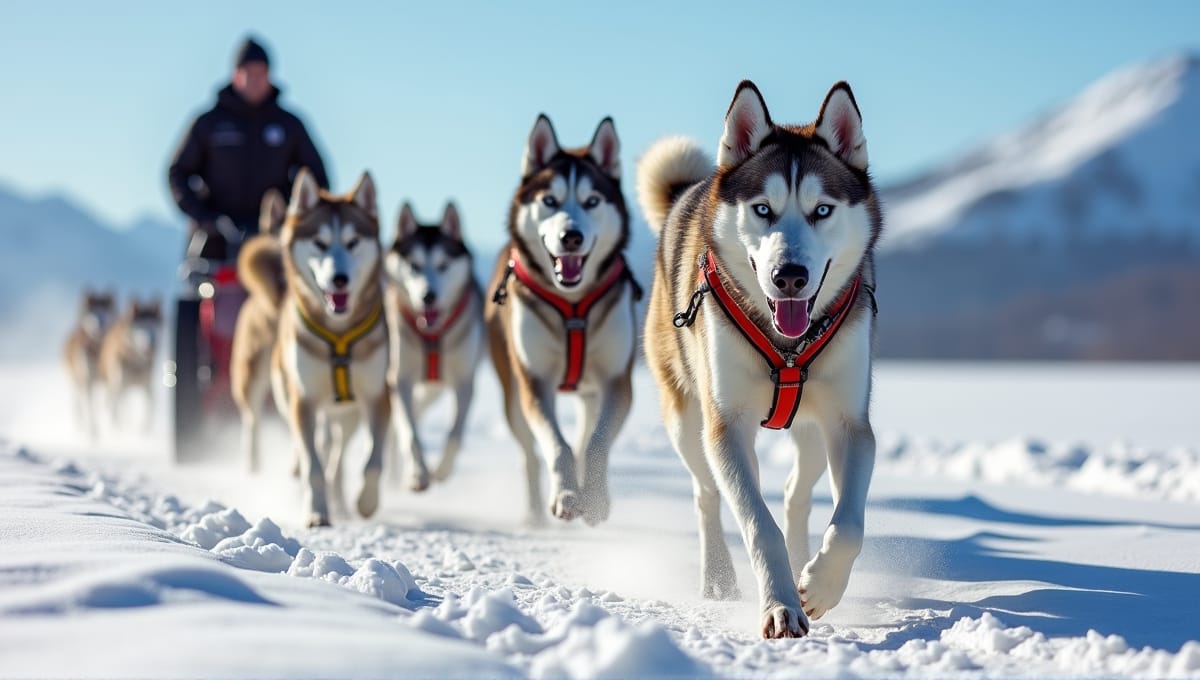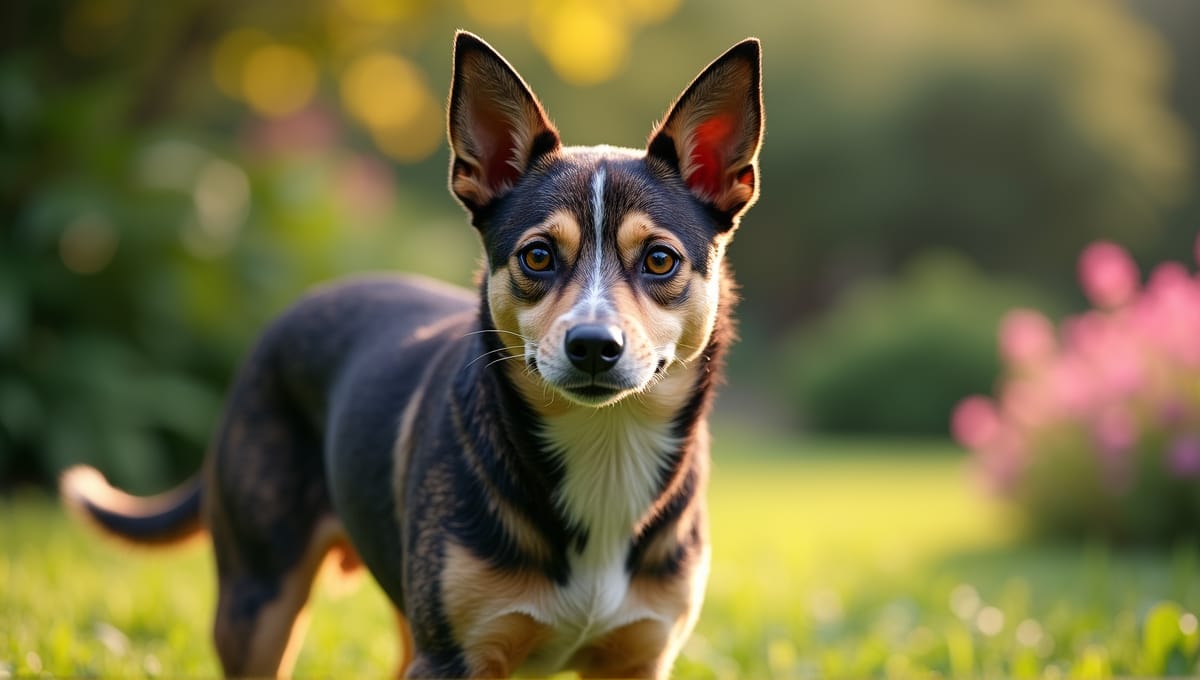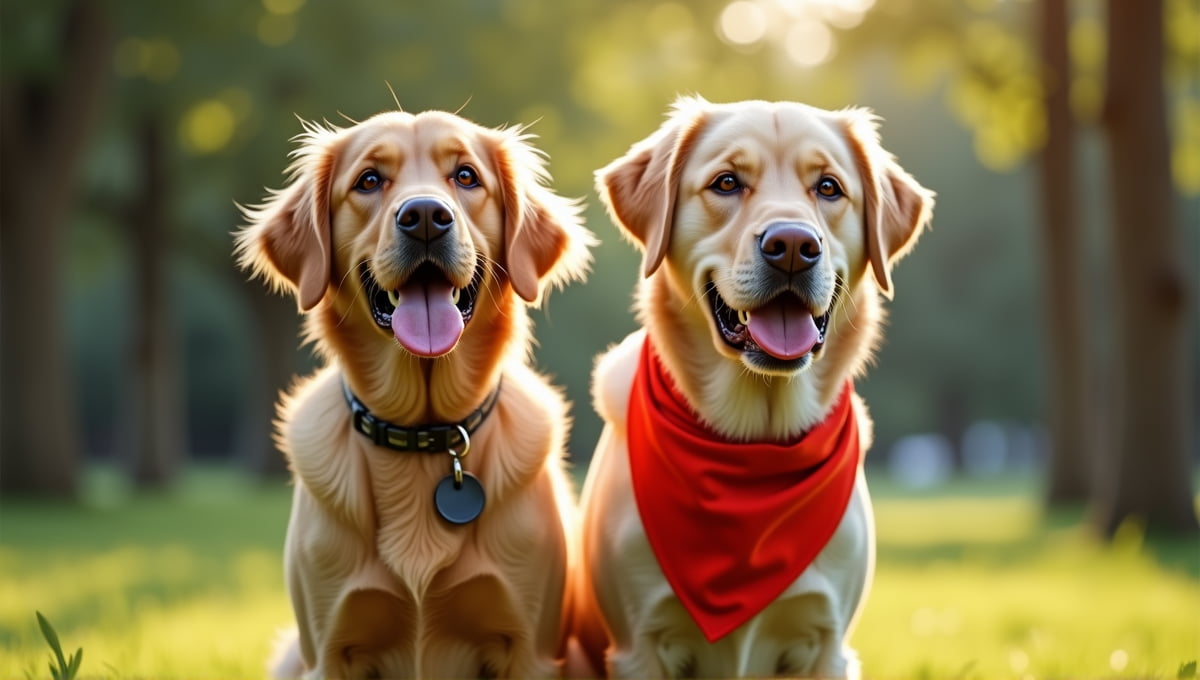Small family dogs are excellent sources of happiness, laughter, and friendship within a home. I’ve watched many families experience a complete turnaround after adding a small dog to the mix. But which breeds are the best small family dogs? With years of experience working with dogs, I’ll discuss the top breeds.
You’ll also discover the key considerations when selecting the ideal small dog for your family.
Top Small Dog Breeds for Families
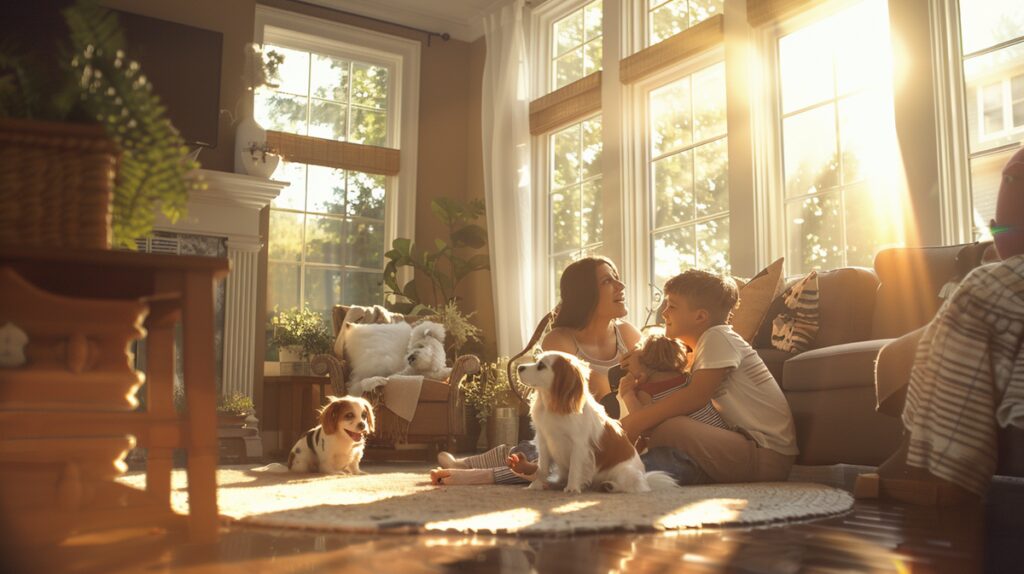
Small family dogs can add joy, love, and companionship to your home. I’ve studied different breeds for years, and let me tell you, these little dogs might be just what you’re looking for in a family dog.
Cavalier King Charles Spaniels are sweet, loving, and great with kids. They’re popular because of their:
- Gentle demeanor
- Versatility in different living situations
- Low activity level
- Silky coat that’s fairly easy to groom
Bichon Frises are small, playful balls of fluff. They’re hypoallergenic as well, making them the perfect dog for your family if you suffer from allergies. Pugs are adorable little clowns with wrinkled faces and huge personalities. They’re also a low-energy breed, so they’re an excellent choice if you live in an apartment.
Shih Tzus are affectionate, loyal, and good with children. Boston Terriers are a bit of a spitfire, and they’re often called “American Gentlemen” because of their tuxedo-like markings. Pomeranians are bold and lively with their foxy faces and soft fur coats.
Beagles are friendly and kid-friendly, but they do require a bit more exercise than other small dogs. French Bulldogs are laid-back, easy to manage, and don’t bark very much, which makes them a fabulous dog for an apartment.
When you’re picking the best small family dog, think about your lifestyle and what the breed needs. Each of these breeds has special traits that might make it the best fit for your family.
Be sure you can meet their activity level, and if you can, that breed should be at the top of your list of the best small family dogs.
Factors to Consider When Choosing
Selecting the best small dog for your family is about more than finding the prettiest small dog. There are several factors you should consider to ensure a good fit.
Size and living situation are top of mind. For example, a Beagle isn’t a great choice if you live in a tiny apartment. On the other hand, a Pug is a great option. Energy levels and exercise needs vary significantly. For example, Pomeranians require daily walks, whereas Cavalier King Charles Spaniels are happy to play indoors with kids.
Temperament and child-friendliness are key. For example, Shih Tzus and Bichon Frises have a reputation for being good with kids. Grooming needs also vary from breed to breed. A Shih Tzu, as an example of a long-haired breed, requires brushing every day, while a Pug, a short-haired breed, requires virtually no grooming.
Health is another important consideration to ensure your long-term happiness:
- Breeds with brachycephalic skulls, like Pugs or French Bulldogs, may have breathing problems.
- Some breeds are predisposed to specific genetic health issues.
- Make sure you take all breeds to the vet regularly.
Consider how long a small dog lives and the commitment you’re making:
• Most small dogs live 12-16 years.
• Bringing a small dog into your family is a commitment of a decade or longer.
Training and Socialization
Training and socializing your small family dog is important to a happy home. I’ve personally witnessed how training can turn a mischievous puppy into a well-behaved member of the family.
Training early is important for a few reasons:
- Establish good habits
- Puppies learn and retain information the best
- Prevent problem behaviors from developing
- Strengthen the bond with the dog and your family
Basic commands like stay, sit, come, and leave it are essential. They also keep your dog safe and make your life easier. Positive reinforcement is the best method of training for small breed dogs. Use treats, play, and praise to reward good behavior.
You should start socializing your dog with family members and any other pets as soon as it comes home. It’s also important to make these experiences positive. This will help prevent fear and aggression later.
It’s important to establish good training and socializing as soon as you bring your puppy home. This will prevent common problems throughout your dog’s life.
There are also a few common behavioral problems you should work on with your small dog. These include barking too much, separation anxiety, or resource guarding. The most important thing is to be consistent and patient to get these issues under control.
If you’re struggling, there are also professional training resources available. A good trainer can give you personalized advice and help you overcome specific challenges. Remember training is also something you need to keep up with. It’s really a family commitment to make it successful.
Exercise and Activity Needs of Small Family Dogs
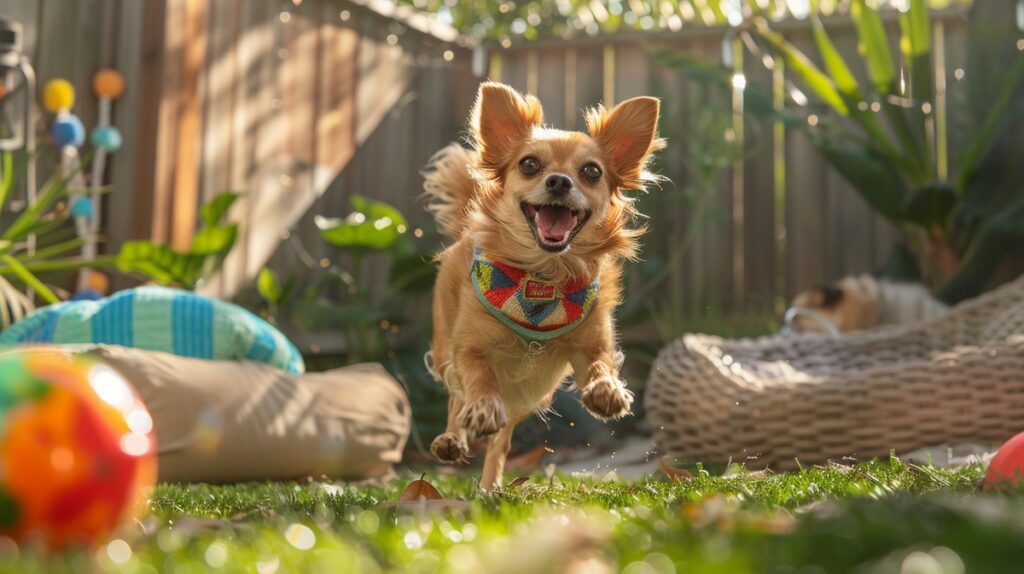
Despite their small size, small family dogs still need regular exercise to remain healthy and happy. The specific amount and type of exercise will vary by breed and individual dog.
The general daily exercise needs for small dogs is:
- 30 minutes – 1 hour of activity
- Combination of physical and mental activity
- Activity appropriate for their age
Indoor activities are great for small dogs, especially when the weather is bad. Examples of good indoor options include hide and seek in the house, fetch in a hallway, or obstacle courses made from household items. Outdoor activities, such as a short walk, a trip to the dog park, or backyard games, are a good idea if the weather allows.
Ensure the exercise is appropriate for your dog’s age. Puppies may have a lot of energy, but they also tire easily. Adult dogs should be able to handle longer periods of activity. Senior dogs will likely not be able to do high-impact exercises.
Don’t forget that mental stimulation is just as important as physical exercise. Puzzle toys, treat balls, and training exercises are great. Additionally, family-friendly games like tug of war or teaching a new trick are good options for warming up your dog’s brain.
When exercising small dogs, the most important consideration is to ensure their safety. Be cautious of their size while they’re playing and avoid any aggressive play with other larger dogs or rough play with children that could unintentionally harm them. Finally, always watch them while they’re outside so they don’t accidentally get into anything they shouldn’t.
Grooming and Care Requirements for Small Family Dogs
Grooming is a key part of taking care of your small dog. Each breed has different grooming needs, but all will require some standard maintenance.
| Breed | Brushing Frequency | Bathing Frequency |
|---|---|---|
| Cavalier King Charles Spaniel | 2-3 times per week | Every 4-6 weeks |
| Bichon Frise | Daily | Every 3-4 weeks |
| Pug | Weekly | Every 3-4 weeks |
| Shih Tzu | Daily | Every 3-4 weeks |
| Boston Terrier | Weekly | Every 4-6 weeks |
| Pomeranian | 2-3 times per week | Every 4-6 weeks |
| Beagle | Weekly | Every 4-6 weeks |
| French Bulldog | Weekly | Every 4-6 weeks |
You should also groom their nails and paws. Dogs with long nails can experience discomfort and walking issues. Small breeds often have dental issues, making dental care important. Ideally, brush their teeth daily, or several times a week if not.
You’ll need to groom their eyes and ears, especially for breeds with bulging or droopy eyes. Use a slightly damp cloth and gently wipe around their eyes. Grooming their ears is as simple as using an ear cleaning solution your vet recommends.
In some cases, professional grooming services are the best option, especially for grooming highly demanding coats for breeds such as Bichon Frises and Shih Tzus. They can perform complicated grooming tasks you can’t, and they can help your dog stay looking great.
Health Considerations
Small family dogs, like all pets, have unique health requirements. Understanding these needs will help you take the best possible care of your small family dog.
What are the most common health problems in small breeds of dogs?
- Crowded teeth often lead to dental issues.
- Patellar luxation is common in small breeds and refers to dislocation of the kneecap.
- Tracheal collapse can occur in toy breeds.
- Cavalier King Charles Spaniels and similar breeds often have heart problems.
- Small breeds sometimes have eye issues, especially those with very prominent eyes.
How can you maintain your small family dog’s health and prevent health problems?
Regular check-ups and preventative care are key. Schedule annual vet check-ups to assess your small family dog’s overall health. Follow a regular vaccination schedule for your small family dog based on your veterinarian’s recommendations to prevent common diseases.
What are important spaying/neutering considerations to keep in mind for small family dogs?
Neutering/spaying can eliminate health problems down the road and prevent unwanted litters. Ask your vet when is the best time to neuter/spay your small family dog, as this can vary by breed and individual dog.
Why does diet and nutrition for small dogs require special attention?
Small dogs have higher metabolisms, so they may need to eat more frequent, smaller meals throughout the day. Select high-quality food that is appropriate for their age, activity level, and size.
Why is managing your small family dog’s weight so important?
Weight management is very important for small breeds, as even a few extra pounds can cause significant health problems. Monitor your family dog’s weight and adjust its diet and exercise if you notice them gaining or losing weight.
Integrating Small Dogs into Family Life
Adding a small dog to your family is an exciting opportunity, but it does require some adjustment. Therefore, the key to setting up your home is removing anything that could harm the puppy, whether that’s small choking hazards or toxic plants.
Establishing routines and rules is also key to helping your new puppy feel safe in your home. Therefore, decide things like where the puppy will sleep, when you’ll feed them, and when you’ll take them outside.
Getting kids involved in caring for a dog is an excellent learning opportunity. Therefore, ask them to help out with tasks related to the dog’s basic needs, like filling up water bowls or grooming. This teaches them responsibility and helps them bond with the dog.
It’s also crucial to pay attention to your family members as well as the dog, even if the dog is the one you’re most excited about. Therefore, make sure every family member, including any existing pets, feels valued and included.
If you have other pets, you’ll need to gradually and carefully introduce the new dog to them. Therefore, use positive reinforcement to teach them that the dog is a friend, and make sure each animal has their own space within your home where they feel safe. With a few tips and consistent introduction, most pets will learn to live together safely.
Finally, remember that it takes time to transition a dog into your home, especially if they’re a puppy. Therefore, be patient and consistent with rules, and don’t be afraid to show the puppy love. Before you know it, the small dog you’re adding to your family will be a joyful and familiar part of your home.
Closing out
Small dogs are excellent family pets. They are versatile, affectionate, and many are great for small homes. However, each breed has different requirements. As you select a breed, think about your family dynamics, living scenario, and lifestyle. With the right training, care, and affection, a small dog can be a wonderful addition to your family for years to come. Your new little furry friend is probably already out there, waiting for you to bring them home and spoil them!


